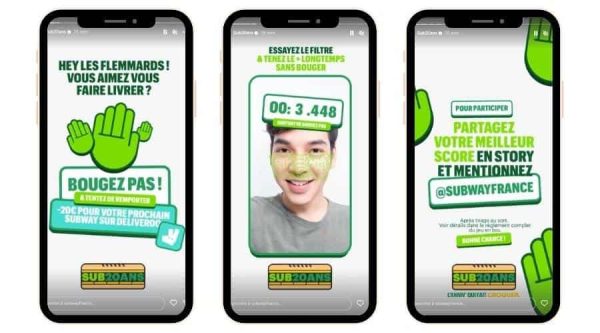What is its definition?
Gamification is the application of game mechanics in a strategy of digital marketing to achieve specific objectives. Also known as the gamificationThis practice is based on the gaming which is very popular with the younger generation. Indeed, young people are increasingly shunning advertising over-solicitation and are becoming more and more resistant to traditional advertising.
Gamification is a marketing technique that allows you toreach a younger audience that is harder to reach with promotional content too simple. Gamification is therefore the act of offering promotional content but in a playful game world. The user will feel more involved and thanks to a game, will be able to interact with the brand that offers it. Most often, gamification is achieved by rewarding participants who are willing to play the game. Rewards can be in the form of gifts, but they can also be in the form of badges for each challenge survey.
Studies show that the commitment rate is 100% higher as soon as a game mechanic is integrated into a digital campaign.
Contact
The different types of gamification
There are several types of support for creating a gamification strategy. We are going to develop digital media, but gamification can also be achieved through physical media. Above all, it is important to know that each medium allows you toachieve different objectives.
The websites
Create gamified content on a website enables the achievement of objectives e-commerce and SEO. Indeed, thanks to gamification, your website will have a increase in qualified traffic since new visitors will come with the intention of spending time on your website (to interact with the entertainment content). Your average time per session will then be increased and the number of new users also. A conversion objective can also be achieved through gamification. With well-organised and created content, it is possible to turn a visitor into a customer. As the user is already on a landing page of your website, all you have to do is direct them to discover your products and services.
Social networks
The social networks are the most suitable media for gamification. Indeed, the younger generations are very familiar with these applications and social networks are making sure to offer a complete digital experience with many features. Here, the goals that can be achieved through gamification will be much more based around your community. This means that the aim of this strategy will be based on increasing your community or improving your proximity to it. Thus, gamification will allow you toincrease your visibility to grow your community and the federate solidly.
The applications
Create an application to gamify your content requires you to make a more serious and advanced game mechanics than on other media. Indeed, you can use your existing application or create a new dedicated application. This type of support will allow you to create a real community involvement and a real buzz towards your gamified application. Indeed, using this medium could create a kind of a new brand to which users will be much closer. This is possible because participants will not associate this application with an advertisement of a certain brand but rather with an application created solely for playing.
Examples of gamification

Competitions on websites
The most common example of gamification is a competition on a landing page. There are many competitions that allow brands to stand out. Here, the idea is to make the participants pass through stages by asking them to meet challenges different.
Filters on social networks
The filters on social networks are the contents that lend themselves most to gamification. This is because, augmented reality that creates the filters is a technology that makes the immersive experiences. Thus, an effect can be created to offer an AR game on social networks. Filters on social networks are very playful and allow to transport participants in virtual worlds unique to the brand.
Application-based games
The most common gamification applications are the daily challenges or sporting challenges. For example, there are applications that count the number of steps and you reward with badges or points when you reach different levels.
As you can see, gamification is essential and must be integrated into your marketing strategy in order to reach a younger target. At Filter Makerwe create the filters for Snapchat, Instagram and TikTok. Contact us for more information!